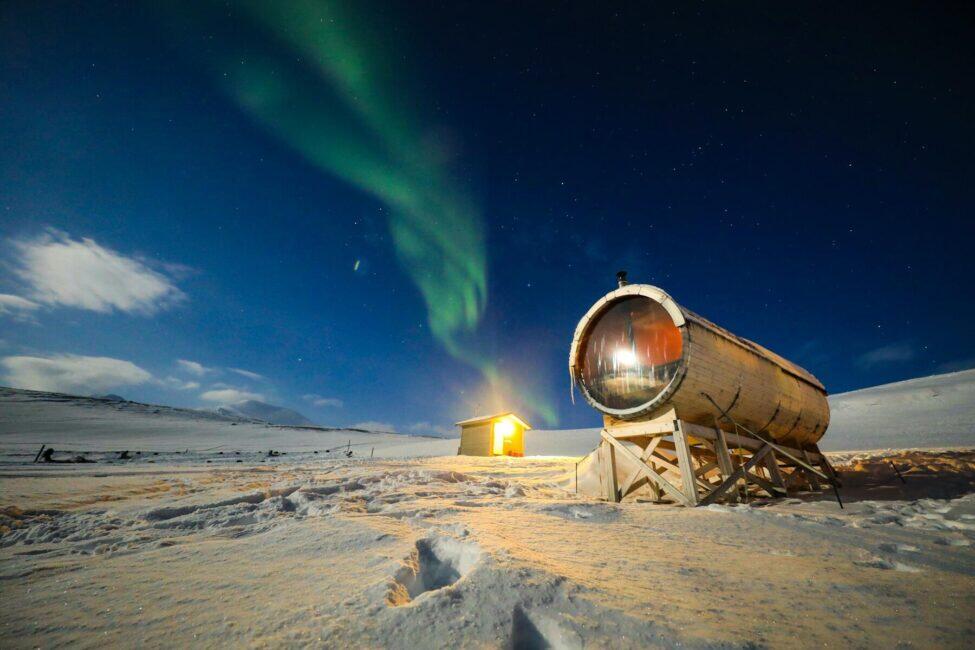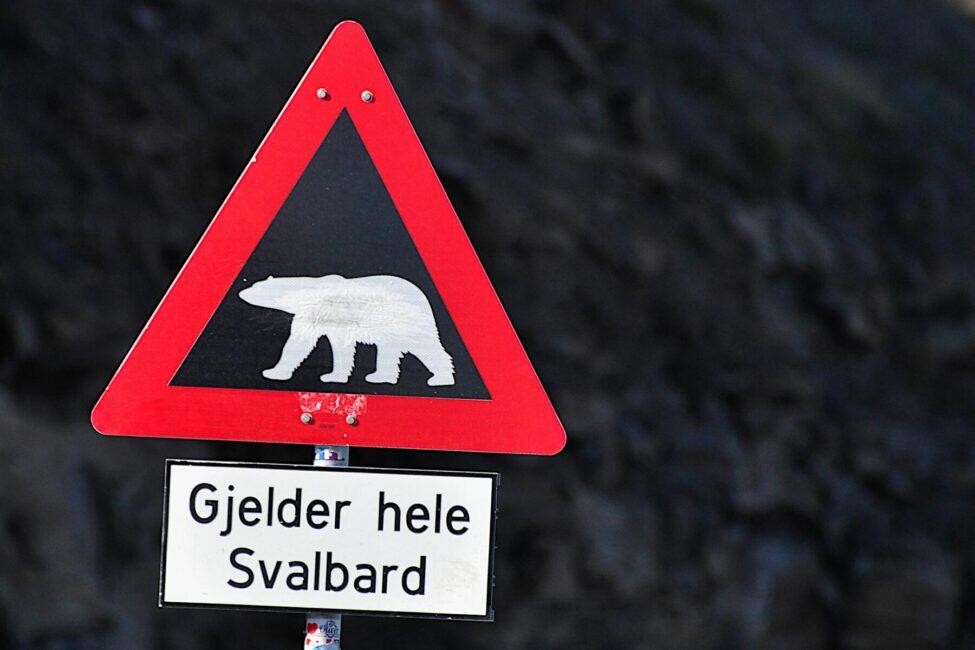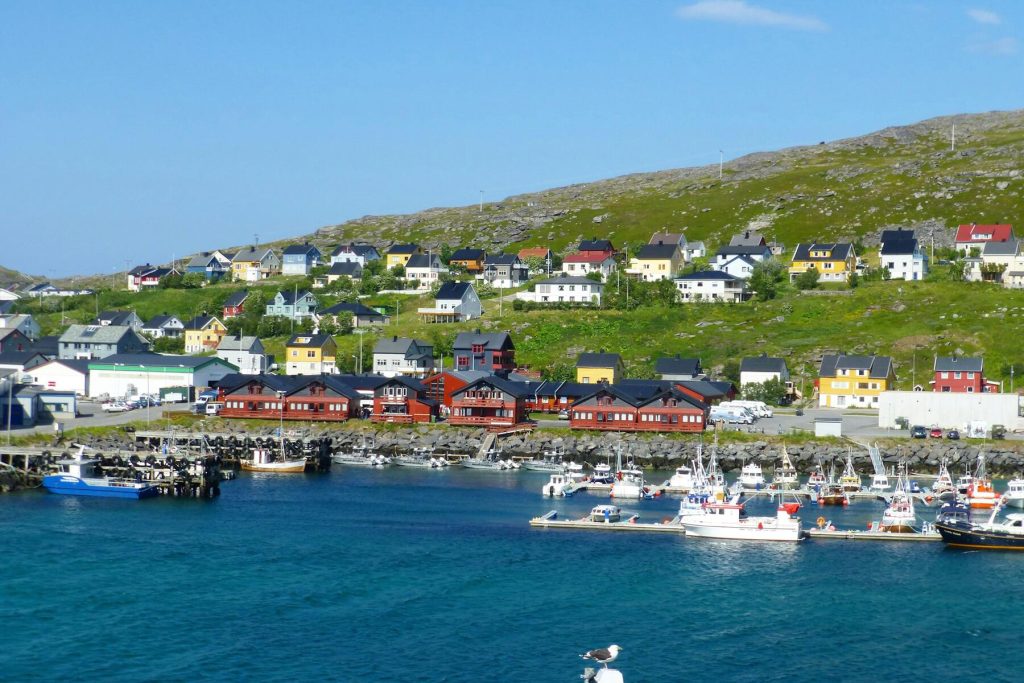But it’s very cold.
Even starting through the lens of my telephoto camera at a polar bear, I couldn’t get my mind off the tiny community where I’d started my journey. Longyearbyen, the largest city in a far-north archipelago, has a year-round population of 2,500, surrounded by mountains, fjords, and glaciers.
I was onboard the Aurora Expeditions ship, the Greg Mortimer, in the midst of the Arctic sea ice just north of the semi-autonomous island group called Svalbard, which is nominally part of the Kingdom of Norway. Even in summer, it was near freezing at this latitude of 83 degrees north, just a few hundred miles from the north pole.
We’d spent several days frolicking in the islands of Svalbard itself—visiting the even smaller community of Ny-Ålesund, a clustering of accommodations for researchers from around the world, and where the airship tower from which the Norwegian explorer Roald Amundsen launched his famous 1925 flight over the North Pole. Onboard the ship, we had frequent lectures from naturalists specializing in arctic flora, fauna, minerals, and human history, hearty meals, and lots of coffee and coconut cookies in between zodiac cruises to seek out polar bears and puffins, or landings to walk about looking for interesting arctic plants or reindeer.
But I kept thinking about something I’d learned while I was in Longyearbyen. Unlike the rest of Europe, the remote community of Svalbard doesn’t have any visa requirements for non-citizens. In theory, you can move there and stay as long as you like without having to get approval for a visa.
Of course, there’s a catch—several, in fact, but they’re not insurmountable.
The biggest is housing. Longyearbyen is essentially a company town, and most of the apartment-style housing is owned by the companies that do business in Svalbard for the benefit of their employees. The good news is that if you want to get a job with one of these companies, there isn’t any of the hassle associated with applying for a visa on your behalf. These jobs, however, are rather rare, and many of them are with the Norwegian government, which is generally only open to Norwegians.
Continue Reading Article After Our Video
Recommended Fodor’s Video
The other jobs, however, when they do come available, mostly don’t require proficiency in Norwegian—mostly because one of the bigger requirements of a job in Svalbard is wanting to live somewhere so remote, where the sun doesn’t shine for weeks at a time during the winter. Longyearbyen is a very international community, and a significant number of residents aren’t Norwegian and don’t speak the language.
There’s also the possibility of working remotely from Svalbard, but that doesn’t solve the problem of housing. It’s not possible to purchase land to build a home, either—most of the land is owned by the Norwegian government, and they’re not in the market to sell. To work remotely from Svalbard, one has to demonstrate enough income to be self-sufficient, have health insurance or the means to self-pay (Svalbard isn’t on any of Norway’s social care systems unless you work for a Norwegian company), and also have somewhere to live. There are a handful of hotels and long-stay accommodations, but their rates are high—typically more than $250 U.S. per night.

The final catch is that while Svalbard doesn’t have an official visa policy, the region’s governor is the arbiter on who can stay. And don’t think of Svalbard as a springboard to residency in Norway either—time spent in Svalbard doesn’t count toward residency requirements for any of Norway’s visa programs.
It’s also worth noting that Svalbard is only accessible via Norway, so anybody going there must also have the right to enter Norway (U.S. passport holders who can enter Europe’s Schengen Area generally don’t have any trouble for shorter stays). Svalbard can also be a waiting area for long-stay travelers nearing their 90 days in 180-day limits on remaining in the Schengen Area (Norway is part of the Schengen Area but Svalbard isn’t—there are border controls in Norway when traveling to or from Svalbard), although there are certainly cheaper places to wait that out for travelers planning to remain in or near Europe indefinitely.

There’s a pleasant primary school in Longyearbyen, where the outdoor playgrounds are cheerfully colored with all sorts of fun playground toys—behind a 10-foot, industrial-grade fence. That’s not to keep the children in, it’s to keep the polar bears out (they’re known to wander into town on occasion). A more extraordinary rule of living in Longyearbyen is that if you want to go outside of town, you must have been trained in how to handle polar bears (or travel with someone who has), which means taking a gun and noisemakers to scare off any bears you encounter.
Or, take the easy route like I did, and board the Greg Mortimer, to watch the bears from the weatherproof dome or the jacuzzi on the top deck, with a cup of cocoa in hand.

